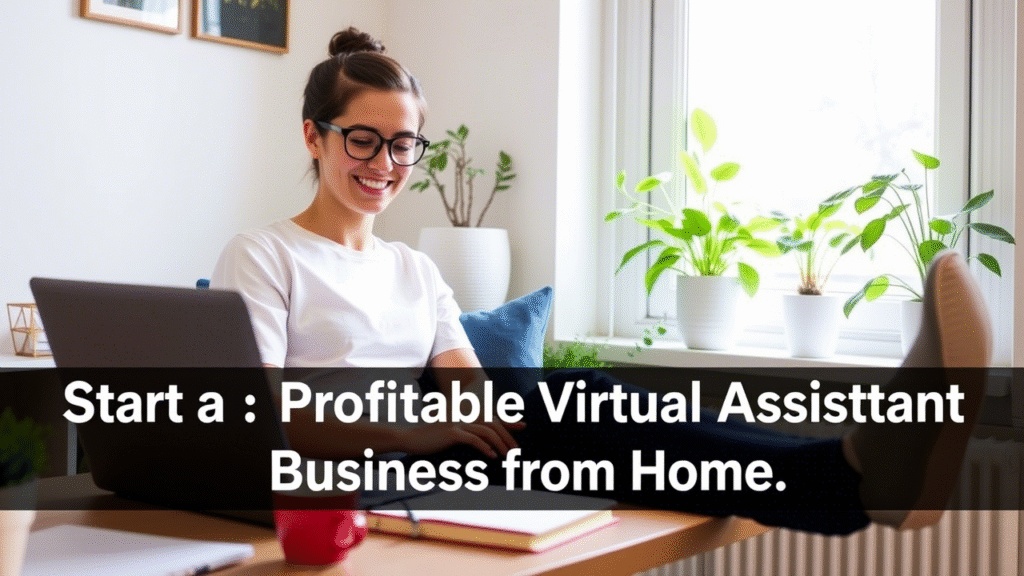In today’s digitally driven world, working from home has never been more accessible. One of the most popular and in-demand work-from-home career paths is becoming a Virtual Assistant (VA). If you’re organized, tech-savvy, and eager to support business owners or entrepreneurs, then starting a virtual assistant business from home might be the perfect opportunity for you.
In this guide, we’ll walk you through everything you need to know about how to start a virtual assistant business from home, even if you’re a complete beginner.
What is a Virtual Assistant?
A virtual assistant is a self-employed professional who provides administrative, technical, or creative support services to clients remotely. These tasks can range from managing emails and calendars to bookkeeping, social media management, customer service, and more.
Because of the flexibility and wide array of services VAs can offer, it’s a great business idea with low startup costs and high scalability.
Why Start a Virtual Assistant Business?
Before we dive into the how-to, let’s take a quick look at why becoming a virtual assistant is a smart move:
- Low startup cost: You only need a computer, internet connection, and a few tools to get started.
- High demand: Small business owners, solopreneurs, and even corporations are outsourcing tasks to VAs.
- Flexible schedule: Work from anywhere, anytime.
- Diverse client base: You can work in virtually any industry, from real estate to e-commerce.
- Scalability: You can grow from solo work to running a VA agency.
Step-by-Step Guide: How to Start a Virtual Assistant Business from Home
1. Identify Your Services and Skills
Start by identifying what skills you already have and how they can help others. Some common VA services include:
- Email and calendar management
- Data entry and spreadsheet creation
- Customer support
- Social media scheduling
- Content writing or editing
- Bookkeeping
- Travel planning
- Research tasks
- Project management
📝 Tip: Choose 3–5 services to specialize in as you start. You can always expand your offerings later.
2. Define Your Niche
Targeting a specific niche can help you stand out in a crowded market. Think about industries you’re familiar with or passionate about. Examples include:
- Real estate
- Online coaches
- Health and wellness experts
- Bloggers and influencers
- E-commerce stores
By choosing a niche, your marketing becomes more targeted, and your services become more valuable.
3. Set Up Your Home Office
Having a dedicated, distraction-free workspace is essential. Here’s what you’ll need:
- A reliable computer or laptop
- High-speed internet connection
- Headphones and microphone (for client calls)
- Productivity tools (Google Workspace, Trello, Slack, Zoom, etc.)
🪑 Invest in a good ergonomic chair and desk to stay comfortable during long work hours.
4. Decide on Your Pricing
Pricing is crucial. Start by researching what other VAs charge in your niche. Most virtual assistants charge in one of three ways:
- Hourly Rate: Common for beginners; rates range from $15 to $40+/hour.
- Package Pricing: Offer bundles based on value (e.g., “10 hours/month for $300”).
- Retainer Contracts: Ongoing agreements with a set number of hours per month.
🧮 Don’t undercharge—factor in taxes, tools, and your experience.
5. Set Up Your Business Legally
To work professionally and protect yourself, set up your business properly. This includes:
- Choosing a business name
- Registering your business (LLC or sole proprietorship)
- Opening a business bank account
- Creating a basic contract or agreement
- Getting any necessary local licenses (optional depending on location)
⚖️ Consider talking to a small business attorney or using services like LegalZoom for guidance.
6. Create Your Online Presence
Even if you’re starting small, you need an online presence to look legitimate and attract clients.
- Create a simple website (use platforms like Wix, Squarespace, or WordPress)
- Set up professional email (e.g., yourname@yourbusiness.com)
- Create a LinkedIn profile focused on your VA services
- Join freelance platforms like Upwork, Fiverr, Freelancer, or Belay
📲 Use social media (especially LinkedIn, Instagram, and Facebook groups) to build authority and connect with potential clients.
7. Build a Portfolio (Even If You Have No Clients Yet)
If you’re just starting and don’t have client work to showcase, no problem. You can create mock samples based on the services you offer. Examples:
- A sample social media calendar
- A mock email newsletter
- A sample blog post or presentation
- Templates or spreadsheets
This helps potential clients understand the quality and style of your work.
8. Find and Pitch Clients
Here are a few strategies to start landing clients:
- Join Facebook groups for entrepreneurs or small businesses and offer value.
- Network on LinkedIn and send personalized messages.
- Respond to freelance job boards or cold email small businesses.
- Ask for referrals from friends or previous coworkers.
💌 Pitching is a skill—be confident, personalize each message, and highlight how you can solve their specific problems.
9. Deliver Excellent Service
Once you land clients, your main job is to deliver excellent work and communication. This includes:
- Meeting deadlines
- Being proactive
- Asking clarifying questions
- Communicating professionally
- Providing regular updates
Happy clients often turn into long-term contracts or refer others to you.
10. Continue Learning and Growing
The virtual assistant world is always evolving. Stay current by:
- Taking online courses (on platforms like Udemy, Coursera, or Skillshare)
- Learning new tools (e.g., Canva, Notion, Dubsado)
- Attending webinars or joining VA communities
🌱 The more you grow your skills, the more value you bring—and the more you can charge.


